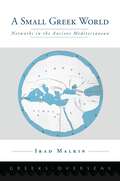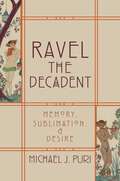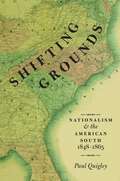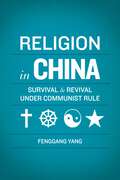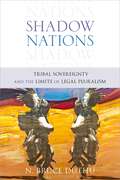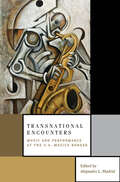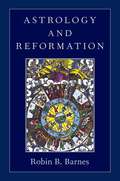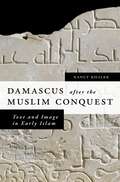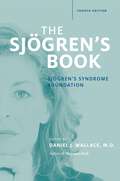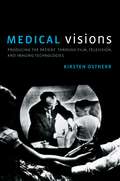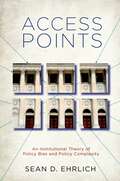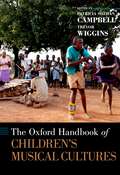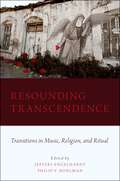- Table View
- List View
A Small Greek World: Networks in the Ancient Mediterranean (Greeks Overseas)
by Irad MalkinGreek civilization and identity crystallized not when Greeks were close together but when they came to be far apart. It emerged during the Archaic period when Greeks founded coastal city states and trading stations in ever-widening horizons from the Ukraine to Spain. No center directed their diffusion: mother cities were numerous and the new settlements ("colonies") would often engender more settlements. The "Greek center" was at sea; it was formed through back-ripple effects of cultural convergence, following the physical divergence of independent settlements. "The shores of Greece are like hems stitched onto the lands of Barbarian peoples" (Cicero). Overall, and regardless of distance, settlement practices became Greek in the making and Greek communities far more resembled each other than any of their particular neighbors like the Etruscans, Iberians, Scythians, or Libyans. The contrast between "center and periphery" hardly mattered (all was peri-, "around"), nor was a bi-polar contrast with Barbarians of much significance. Should we admire the Greeks for having created their civilization in spite of the enormous distances and discontinuous territories separating their independent communities? Or did the salient aspects of their civilization form and crystallize because of its architecture as a de-centralized network? This book claims that the answer lies in network attributes shaping a "Small Greek World," where separation is measured by degrees of contact rather than by physical dimensions.
The New Heretics of France: Minority Religions, la Republique, and the Government-Sponsored ''War on Sects''
by Susan PalmerSince the Age of Enlightenment, France has upheld clear constitutional guidelines that protect human rights and religious freedom. Today, however, intolerant attitudes and discriminatory practices towards unconventional faiths have become acceptable and even institutionalized in public life. Susan Palmer offers an insightful examination of France's most stigmatized new religions, or "sectes," and the public management of religious and philosophical minorities by the state. The New Heretics of France tracks the mounting government-sponsored anti-cult movement in the wake of the shocking mass suicides of the Solar Temple in 1994, an event that ushered France's most visible religious minorities onto a blacklist of 172 "sectes" commissioned by the National Assembly. Drawing on extensive interviews and field research, Palmer describes the controversial histories of well-known international New Religious Movements including the Church of Scientology, Raelian Movement, and Unificationism, as well as esoteric local groups. Palmer also reveals the partisanship of Catholic priests, journalists, village mayors, and the passive public who support La République's efforts to control minority faiths - all in the name of "Liberty, Equality and Fraternity." Through historical and sociological theory, Palmer analyzes France's war on "sectes" as a strategic response to social pressures arising from globalization and immigration. Her study addresses the impact of these social pressures on traditional cultures and national character, as well as important issues of religious freedom and public tolerance.
The Picture of Health: Medical Ethics and the Movies
by Henri Colt Silvia Quadrelli Friedman LesterFilm and literature have long been mined for interesting examples and case studies in order to teach biomedical ethics to students. This volume presents a collection of about 80 very brief, accessible essays written by international experts from medicine, social sciences, and the humanities, all of whom have experience using film in their teaching of medical ethics. Each essay focuses on a single scene and the ethical issues it raises, and the volume editors have provided strict guidelines for what each essay must do, while also allowing for some creative freedom. While some of the films are obvious candidates with medical themes -- "Million Dollar Baby", "The Diving Bell and the Butterfly" -- some are novel choices, such as "Pan's Labyrinth" or "As Good as it Gets". The book will contain several general introductory chapters to major sections, and a complete filmography and cross-index at the end of the book where readers can look up individual films or ethical issues.
Ravel the Decadent: Memory, Sublimation, and Desire
by Michael J. PuriThe music of Maurice Ravel (1875-1937), beloved by musicians and audiences since its debut, has been a difficult topic for scholars. The traditional stylistic categories of impressionism, symbolism, and neoclassicism, while relevant, have offered too little purchase on this fascinating but enigmatic work. In Ravel the Decadent, author Michael Puri provides an innovative and productive solution by locating the aesthetic origins of this music in the French Decadence and demonstrating the extension of this influence across the length of his oeuvre. From an array of Decadent topics Puri selects three--memory, sublimation, and desire--and uses them to delineate the content of this music, pinpoint its overlap with contemporary cultural discourse, and link it to its biographical context, as well as to create new methods altogether for the analysis and interpretation of music. Ravel the Decadent opens by defining the main concepts, giving particular attention to memory and decadence. It then stakes out contrasting modes of memory in this music: a nostalgic mode that views the past as forever lost, and a more optimistic one that imagines its resurrection and reanimation. Acknowledging Ravel's lifelong identity as a dandy--a figure that embodies the Decadence and its aspiration toward the sublime--Puri identifies possible moments of musical self-portraiture before stepping back to theorize dandyism in European musical modernism at large. He then addresses the dialectic between desire and its sublimation in the pairing of two genres--the bacchanal and the idyl--and leverages the central trio of concepts to offer provocative readings of Ravel's two waltz sets, the Valses nobles et sentimentales and La valse. Puri concludes by invoking the same terms to identify a topic of "faun music" that promises to create new common ground between Ravel and Debussy. Rife with close readings that will satisfy the musicologist, Ravel the Decadent also suits a more general reader through its broadly humanistic key concepts, immersion in contemporary art and literature, and clarity of language.
Healers: Extraordinary Clinicians at Work
by David Schenck Larry ChurchillIn this groundbreaking volume, David Schenck and Larry Churchill present the results of fifty interviews with practitioners identified by their peers as "healers," exploring in depth the things that the best clinicians do. They focus on specific actions that exceptional healers perform to improve their relationships with their patients and, subsequently, improve their patients' overall health. The authors analyze the ritual structure and spiritual meaning of these healing skills, as well as their scientific basis, and offer a new, more holistic interpretation of the "placebo effect." Recognizing that the best healers are also people who know how to care for themselves, the authors describe activities that these clinicians have chosen to promote wellness, wholeness and healing in their own lives. The final chapter explores the deep connections between the mastery of healing skills and the mastery of what the authors call the "skills of ethics." They argue that ethics should be considered a healing art, alongside the art of medicine.
Shifting Grounds: Nationalism and the American South, 1848-1865
by Paul QuigleyBetween 1848 and 1865 white southerners felt the grounds of nationhood shift beneath their feet. The conflict over slavery that led to the Civil War forced them to confront the difficult problems of nationalism. What made a nation a nation? Could an individual or a group change nationality at will? What were the rights and responsibilities of national citizenship? Why should nations exist at all? As they contemplated these questions, white southerners drew on their long experience as Americans and their knowledge of nationalism in the wider world. This was true of not just the radical secessionists who shattered the Union in 1861, but also of the moderate majority who struggled to balance their southern and American loyalties. As they pondered the changing significance of the Fourth of July, as they fused ideals of masculinity and femininity with national identity, they revealed the shifting meanings of nationalism and citizenship. Southerners also looked across the Atlantic, comparing southern separatism with movements in Hungary and Ireland, and applying the European model of romantic nationalism first to the United States and later to the Confederacy. In the turmoil of war, the Confederacy's national government imposed new, stringent obligations of citizenship, while the shared experience of suffering united many Confederates in a sacred national community of sacrifice. For Unionists, die-hard Confederates, and the large majority torn between the two, nationalism became an increasingly pressing problem. In Shifting Grounds Paul Quigley brilliantly reinterprets southern conceptions of allegiance, identity, and citizenship within the contexts of antebellum American national identity and the transatlantic "Age of Nationalism," shedding new light on the ideas and motivations behind America's greatest conflict.
Fulfilling Social and Economic Rights
by Sakiko Fukuda-Parr Terra Lawson-Remer Susan RandolphOne of the most ambitious legacies of the 20th century was the universal commitment to ensure freedom from want as a human right. But to what extent are countries across the world living up to this commitment? This path breaking book develops an innovative, evidence-based index for comparing performance on education, food, health, work and housing across very differently situated countries and over time. It explores the factors influencing performance and provides empirical evidence to resolve some long standing controversies over the principle of "progressive realization". By defying the boundaries of traditional research disciplines, this work fundamentally advances our knowledge about the status of and factors promoting social and economic rights fulfillment at the dawn of the 21st century.
Religion in China: Survival and Revival under Communist Rule
by Fenggang YangReligion in China survived the most radical suppression in human history--a total ban of any religion during and after the Cultural Revolution. All churches, temples, and mosques were closed down, converted for secular uses, or turned to museums for the purpose of atheist education. Over the last three decades, however, religion has survived and thrived even as China remains under Communist rule. Christianity ranks among the fastest-growing religions in the country, and many Buddhist and Daoist temples have been restored. The state even sponsors large Buddhist gatherings and ceremonies to venerate Confucius and the legendary ancestors of the Chinese people. On the other hand, quasi-religious qigong practices, once ubiquitous, are now rare. All the while, authorities have carried out waves of atheist propaganda, anti-superstition campaigns, severe crackdowns on the underground Christian churches and various ''evil cults.'' How do we explain religion in China today? How did religion survive the eradication measures in the 1960s and 1970s? How do various religious groups manage to revive despite strict regulations? Why have some religions grown fast in the reform era? Why have some forms of spirituality gone through dramatic turns? In Religion in China, Fenggang Yang provides a comprehensive overview of the religious change in China under Communism.
Oxford American Handbook of Reproductive Medicine (Oxford American Handbooks of Medicine)
by Hugh S. Taylor Tamir S. Aldad Enda McVeigh Roy Homburg John GuillebaudReproductive medicine is the most dynamic area within obstetrics and gynecology and, arguably, the most complicated. An explosion of scientific understanding and technological capabilities - particularly in contraception, infertility and menopause - has transformed the specialty into a high-profile subject that touches upon endocrinology, embryology, andrology, surgery, social science, and practical law and ethics. The Oxford American Handbook of Reproductive Medicine provides a practical overview of the reproductive system and a systematic approach to its disorders, covering diagnosis, assessment, and ongoing management with particular emphasis on common and important presentations. Concise, readable, and pocket-sized, this handbook is useful for medical students, primary care clinicians, and ob/gyn residents as a ready reference for daily practice.
Shadow Nations: Tribal Sovereignty and the Limits of Legal Pluralism
by Bruce DuthuAmerican Indian tribes have long been recognized as "domestic, dependent nations" within the United States, with powers of self-government that operate within the tribes' sovereign territories. Yet over the years, Congress and the Supreme Court have steadily eroded these tribal powers. In some respects, the erosion of tribal powers reflects the legacy of an imperialist impulse to constrain or eliminate any political power that may compete with the state. These developments have moved the nation away from its early commitments to a legally plural society--in other words, the idea that multiple nations and their legal systems could co-exist peacefully in shared territories. Shadow Nations argues for redirecting the trajectory of tribal-federal relations to better reflect the formative ethos of legal pluralism that operated in the nation's earliest years. From an ideological standpoint, this means that we must reexamine several long-held commitments. One is to legal centralism, the view that the nation-state and its institutions are the only legitimate sources of law. Another is to liberalism, the dominant political philosophy that undergirds our democratic structures and situates the individual, not the group or a collective, as the bedrock moral unit of society. From a constitutional standpoint, establishing more robust expressions of tribal sovereignty will require that we take seriously the concerns of citizens, tribal and non-tribal alike, who demand that tribal governments operate consistently with basic constitutional values. From an institutional standpoint, these efforts will require a new, flexible and adaptable institutional architecture that is better suited to accommodating these competing interests. Argued with grace, humanity, and a peerless scholarly eye, Shadow Nations is a clarion call for a true and consequential rethinking of the legal and political relationship between Indigenous tribes and the United States government.
Transnational Encounters: Music and Performance at the U.S.-Mexico Border
by Alejandro L. MadridThrough the study of a large variety of musical practices from the U.S.-Mexico border, Transnational Encounters seeks to provide a new perspective on the complex character of this geographic area. By focusing not only on norteña, banda or conjunto musics (the most stereotypical musical traditions among Hispanics in the area) but also engaging a number of musical practices that have often been neglected in the study of this border's history and culture (indigenous musics, African American musical traditions, pop musics), the authors provide a glance into the diversity of ethnic groups that have encountered each other throughout the area's history. Against common misconceptions about the U.S.-Mexico border as a predominant Mexican area, this book argues that it is diversity and not homogeneity which characterizes it. From a wide variety of disciplinary and multidisciplinary enunciations, these essays explore the transnational connections that inform these musical cultures while keeping an eye on their powerful local significance, in an attempt to redefine notions like "border," "nation," "migration," "diaspora," etc. Looking at music and its performative power through the looking glass of cultural criticism allows this book to contribute to larger intellectual concerns and help redefine the field of U.S.-Mexico border studies beyond the North/South and American/Mexican dichotomies. Furthermore, the essays in this book problematize some of the widespread misconceptions about U.S.-Mexico border history and culture in the current debate about immigration.
Associative Learning and Conditioning Theory: Human and Non-Human Applications
by Todd R. Schachtman Steve S. ReillyAlthough many professionals in psychology (including the sub-disciplines of human learning and memory, clinical practice related to psychopathology, neuroscience, educational psychology and many other areas) no longer receive training in learning and conditioning, the influence of this field remains strong. Therefore, many researchers and clinicians have little knowledge about basic learning theory and its current applications beyond their own specific research topic. The primary purpose of the present volume is to highlight ways in which basic learning principles, methodology, and phenomena underpin, and indeed guide, contemporary translational research. With contributions from a distinguished collection of internationally renowned scholars, this 23-chapter volume contains specific research issues but is also broad in scope, covering a variety of topics in which associative learning and conditioning theory apply, such as drug abuse and addiction, anxiety, fear and pain research, advertising, attribution processes, acquisition of likes and dislikes, social learning, psychoneuroimmunology, and psychopathology (e.g., autism, depression, helplessness and schizophrenia). This breadth is captured in the titles of the three major sections of the book: Applications to Clinical Pathology; Applications to Health and Addiction; Applications to Cognition, Social Interaction and Motivation. The critically important phenomena and methodology of learning and conditioning continue to have a profound influence on theory and clinical concerns related to the mechanisms of memory, cognition, education, and pathology of emotional and consummatory disorders. This volume is expected to have the unique quality of serving the interests of many researchers, educators and clinicians including, for example, neuroscientists, learning and conditioning researchers, psychopharmacologists, clinical psychopathologists, and practitioners in the medical field.
Astrology and Reformation
by Robin B. BarnesWinner of the 2016 Roland H. Bainton Book Prize of the Sixteenth Century Society and Conference During the sixteenth century, no part of the Christian West saw the development of a more powerful and pervasive astrological culture than the very home of the Reformation movement--the Protestant towns of the Holy Roman Empire. While most modern approaches to the religious and social reforms of that age give scant attention to cosmological preoccupations, Robin Barnes argues that astrological concepts and imagery played a key role in preparing the ground for the evangelical movement sparked by Martin Luther in the 1520s, as well as in shaping the distinctive characteristics of German evangelical culture over the following century. Spreading above all through cheap printed almanacs and prognostications, popular astrology functioned in paradoxical ways. It contributed to an enlarged and abstracted sense of the divine that led away from clericalism, sacramentalism, and the cult of the saints; at the same time, it sought to ground people more squarely in practical matters of daily life. The art gained unprecedented sanction from Luther's closest associate, Philipp Melanchthon, whose teachings influenced generations of preachers, physicians, schoolmasters, and literate layfolk. But the apocalyptic astrology that came to prevail among evangelicals involved a perpetuation, even a strengthening, of ties between faith and cosmology, which played out in beliefs about nature and natural signs that would later appear as rank superstitions. Not until the early seventeenth century did Luther's heirs experience a "crisis of piety" that forced preachers and stargazers to part ways. Astrology and Reformation illuminates an early modern outlook that was both practical and prophetic; a world that was neither traditionally enchanted nor rationally disenchanted, but quite different from the medieval world of perception it had displaced.
The Oxford Handbook of the Social Science of Obesity (Oxford Handbooks)
There is an urgent need to better understand the causes and consequences of obesity, and to learn what works to prevent or reduce obesity. This volume accurately and conveniently summarizes the findings and insights of obesity-related research from the full range of social sciences including anthropology, economics, government, psychology, and sociology. It is an excellent resource for researchers in these areas, both bringing them up to date on the relevant research in their own discipline and allowing them to quickly and easily understand the cutting-edge research being produced in other disciplines. The Oxford Handbook of the Social Science of Obesity is a critical reference for obesity researchers and is also valuable for public health officials, policymakers, nutritionists, and medical practitioners. The first section of the book explains how each social science discipline models human behavior (in particular, diet and physical activity), and summarizes the major research literatures on obesity in that discipline. The second section provides important practical information for researchers, including a guide to publicly available social science data on obesity and an overview of the challenges to causal inference in obesity research. The third part of the book synthesizes social science research on specific causes and correlates of obesity, such as food advertising, food prices, and peers. The fourth section summarizes social science research on the consequences of obesity, such as lower wages, job absenteeism, and discrimination. The fifth and final section reviews the social science literature on obesity treatment and prevention, such as food taxes, school-based interventions, and medical treatments such as anti-obesity drugs and bariatric surgery.
A Field Guide to the Reptiles of Thailand
by Tanya Chan-ard Jarujin Nabhitabhata John W. ParrThailand is home to over 350 species of reptiles, consisting of many kinds of turtles and tortoises, lizards, snakes and crocodiles. With its extensive network of protected areas, Thailand is one of the richest and most ecologically diverse countries in the world. However, many of these species are being threatened more than ever before, including habitat loss caused by agricultural expansion and intensification, and from wildlife trade. For herpetologists and naturalists, understanding the reptiles of Thailand is now more important than ever before. With A Field Guide to the Reptiles of Thailand, Tanya Chan-ard, John Parr, and Jarujin Nabhitabhata present the definitive resource for identifying and understanding all known species of reptile in the region. It is the only updated and complete guide to the country's reptilian life in existence. The book contains an account of every species, complete with nomenclature, color illustrations, and range maps of known locations. The accounts include discussion of behavior, morphological measurements, and habitat, as well as the most current information on each species' conservation status. The authors explain the current system of classifying the threat level of endangerment, making the presented information and terminology understandable and useful. The introduction to the book discusses the history of herpetology in Thailand, as well as its climate, physiography, and zoogeography. A section on how to use the guide most effectively has also been included to make the book accessible to a wide range of both scientists and nature enthusiasts. A Field Guide to the Reptiles of Thailand is the definitive and most comprehensive resource for herpetologists, naturalists, and conservationists working in Thailand.
Damascus after the Muslim Conquest: Text and Image in Early Islam
by Nancy KhalekBefore it fell to Muslim armies in AD 635-6 Damascus had a long and prestigious history as a center of Christianity. How did this city, which became the capitol of the Islamic Empire and its people, negotiate the transition from a late antique or early Byzantine world to an Islamic culture? In Damascus after the Muslim Conquest, Nancy Khalek demonstrates that the changes that took place in Syria during this formative period of Islamic life were not simply a matter of the replacement of one civilization by another as a result of military conquest, but rather of shifting relationships and practices in a multifaceted social and cultural setting. Even as late antique forms of religion and culture persisted, the formation of Islamic identity was affected by the people who constructed, lived in, and narrated the history of their city. Khalek draws on the evidence of architecture and the testimony of pilgrims, biographers, geographers, and historians to shed light on this process of identity formation. Offering a fresh approach to the early Islamic period, she moves the study of Islamic origins beyond a focus on issues of authenticity and textual criticism, and initiates an interdisciplinary discourse on narrative, storytelling, and the interpretations of material culture.
Burned Bridge: How East and West Germans Made the Iron Curtain
by Edith ShefferThe building of the Berlin Wall in 1961 shocked the world. Ever since, the image of this impenetrable barrier between East and West, imposed by communism, has been a central symbol of the Cold War. Based on vast research in untapped archival, oral, and private sources, Burned Bridge reveals the hidden origins of the Iron Curtain, presenting it in a startling new light. Historian Edith Sheffer's unprecedented, in-depth account focuses on Burned Bridge-the intersection between two sister cities, Sonneberg and Neustadt bei Coburg, Germany's largest divided population outside Berlin. Sheffer demonstrates that as Soviet and American forces occupied each city after the Second World War, townspeople who historically had much in common quickly formed opposing interests and identities. The border walled off irreconcilable realities: the differences of freedom and captivity, rich and poor, peace and bloodshed, and past and present. Sheffer describes how smuggling, kidnapping, rape, and killing in the early postwar years led citizens to demand greater border control on both sides--long before East Germany fortified its 1,393 kilometer border with West Germany. It was in fact the American military that built the first barriers at Burned Bridge, which preceded East Germany's borderland crackdown by many years. Indeed, Sheffer shows that the physical border between East and West was not simply imposed by Cold War superpowers, but was in some part an improvised outgrowth of an anxious postwar society. Ultimately, a wall of the mind shaped the wall on the ground. East and West Germans became part of, and helped perpetuate, the barriers that divided them. From the end of World War II through two decades of reunification, Sheffer traces divisions at Burned Bridge with sharp insight and compassion, presenting a stunning portrait of the Cold War on a human scale.
Psychotherapy Relationships That Work: Evidence-Based Responsiveness
by John C. NorcrossFirst published in 2002, the landmark Psychotherapy Relationships That Work broke new ground by focusing renewed and corrective attention on the substantial research behind the crucial (but often overlooked) client-therapist relationship. This thoroughly revised edition brings a decade of additional research to the same task. In addition to updating each chapter, the second edition features new chapters on the effectiveness of the alliance with children and adolescents, the alliance in couples and family therapy, real-time feedback from clients, patient preferences, culture, and attachment style. The new editon provides "two books in one"--one on evidence-based relationship elements and one on evidence-based methods of adapting treatment to the individual patient. Each chapter features a specific therapist behavior that improves treatment outcome, or a transdiagnostic patient characteristic (such as reactance, preferences, culture, stage of change) by which clinicians can effectively tailor psychotherapy. All chapters provide original, comprehensive meta-analyses of the relevant research; clinical examples, and research-supported therapeutic practices by distinguished contributors. The result is a compelling synthesis of the best available research, clinical expertise, and patient characteristics in the tradition of evidence-based practice. The second edition of Psychotherapy Relationships That Work: Evidence-Based Responsiveness proves indispensible for any mental health professional. Reviews of the First Edition: "A veritable gold mine of research related to relationships, this is a volume that should be an invaluable reference for every student and practitioner of psychotherapy."--Psychotherapy "This is a MUST READ for any researcher, clinician, or counselor who is genuinely interested in the active ingredients of effective psychotherapy and who appreciates the importance of applying empirical evidence to the therapy relationship."--Arnold A. Lazarus, Ph.D., Distinguished Professor Emeritus, Rutgers University "Psychotherapy Relationships That Work is a superb contemporary textbook and reference source for students and professionals seeking to expand their knowledge and understanding of person-related psychotherapy." --Psychotherapy Research "One is struck with the thoroughness of all the chapters and the care and detail of presentation."--Brief Treatment and Crisis Intervention
The Sjogren's Book
by Daniel J. WallaceAfflicting one in seventy Americans, Sjögren's syndrome is an autoimmune disease that commonly causes dryness of the eyes, mouth, and nose, and that can lead to complications including profound fatigue, depression, and lymphoma. While there is no cure for Sjögren's, much can be done to alleviate the suffering of patients. This extensively revised handbook offers everything you need to know to cope with this disease. The Sjögren's Book, Fourth Edition is a comprehensive and authoritative guide, produced by the Sjögren's Syndrome Foundation and its medical advisors and edited by physician Daniel J. Wallace, a leading authority on autoimmune disorders. This expanded edition provides readers with the best medical and practical information on this disorder, bringing together the current thinking about Sjögren's in an easily readable and understandable book, with an entirely new section on lifestyle issues aimed at improving the quality of life for Sjögren's sufferers. With more than thirty chapters written by leading experts, the handbook illuminates the major clinical aspects of the syndrome and is loaded with practical tips and advice. Indeed, it offers a wide-ranging look at the many faces of Sjögren's, covering diagnosis, the various organ systems that can be affected, the possible psychological problems, and the many treatment options, as well as a concluding chapter listing the web, print, and media resources available. It is a valuable aid that patients can use while discussing their illness with their physician and an excellent resource for family members. And because Sjögren's is greatly underdiagnosed, this handbook is a particularly valuable resource for healthcare professionals. Recognized as the bible for Sjögren's suffers, this reliable and informative guide is the first place for patients to look when they have questions about this little known but serious chronic disease.
Medical Visions: Producing the Patient Through Film, Television, and Imaging Technologies
by Kirsten OstherrHow do visual images shape the practice of medicine? What role does visual representation play in the cultivation of medical ways of seeing? And how has medicine's visual culture changed in the digital age? Kirsten Ostherr's ambitious study explores 120 years of medical image-making to explain how visual representations shape medical education and practice. Marshaling powerful, vivid examples she demonstrates how medical images created by the healthcare industry, documentary filmmakers, experimental artists, and the mass media acquire cultural meaning and influence doctors' and patients' understandings of health and disease. Her analysis proceeds chronologically, turning from the earliest experiments with medical filmmaking by the American College of Surgeons, to the place of health films in the "golden age" of instructional film in the 1960s. Ostherr considers the shift to television as the dominant medium of health education, highlighting the evolving status of realism, the techniques employed to bridge the entertainment-education divide, the role of expert consultants and sponsors, and the tradeoffs made by professionals to reach a broad audience. The rise of physician advice segments on newsmagazines forms a transition between medical dramas like Marcus Welby, MD and more recent reality shows like Boston Med and Doctor 90210. Concluding with a section on advertising and social media in the health care setting, the book ends with ten key lessons for the future of medical media.
Ecoimmunology
by Gregory Demas Randy NelsonThe role of parasites and pathogens in the evolution of life history traits is of increasing interest to both ecologists and evolutionary biologists. Immunology, which was once studied almost exclusively by immunologists, has become an important area of proximate investigation to animal physiologists as a means for understanding changes in disease susceptibility and the neural and neuroendocrine mechanisms that mediate these changes. The coalescence of these different perspectives has given rise to the field of ecological immunology, an interdisciplinary research field that examines interactions among host physiology and disease ecology in a wide range of environmentally relevant contexts. The goal of ecological immunology is to understand immune function in the context of life-history traits across a wide range of organisms. Research within the field combines diverse approaches from a wide range of scientific disciplines including evolution, ecology, and life history theory to endocrinology, neuroscience, molecular biology, and behavior. This book critically reviews recent advances in the discipline of ecoimmunology. Chapters are written by experts in their respective fields and cover diverse topics including how environmental factors can affect host immune function, the complex dynamics among host immunity, pathogen prevalence and disease susceptibility, and the physiological mechanisms that lead to adaptive changes in immune responses. By integrating analyses of immune system function within animal biology, investigators will gain will gain a more comprehensive and satisfying understanding of organism-environment interactions at both ultimate and proximate levels of analysis.
Spanish in New York: Language Contact, Dialectal Leveling, and Structural Continuity (Oxford Studies in Sociolinguistics)
by Ricardo Otheguy Ana Celia ZentellaSpanish in New York is a groundbreaking sociolinguistic analysis of immigrant bilingualism in a U.S. setting. Drawing on one of the largest corpora of spoken Spanish ever assembled for a single city, Otheguy and Zentella demonstrate the extent to which the language of Latinos in New York City represents a continuation of structural variation as it is found in Latin America, as well as the extent to which Spanish has evolved in New York City. Their study, which focuses on language contact, dialectal leveling, and structural continuity, carefully distinguishes between the influence of English and the mutual influences of forms of Spanish with roots in different parts of Latin America. Taking variationist sociolinguistics as its guiding paradigm, the book compares the Spanish of New Yorkers born in Latin America with that of those born in New York City. Findings are grounded in a comparative analysis of 140 sociolinguistic interviews of speakers with origins in Colombia, Cuba, Dominican Republic, Ecuador, Mexico and Puerto Rico. Quantitative analysis (correlations, anovas, variable hierarchies, constraint hierarchies) reveals the effect on the use of subject personal pronouns of the speaker's gender, immigrant generation, years spent in New York, and amount of exposure to English and to varieties of Spanish. In addition to these speaker factors, structural and communicative variables, including the person and tense of the verb and its referential status, have a significant impact on pronominal usage in New York City.
Access Points: An Institutional Theory of Policy Bias and Policy Complexity
by Sean D. EhrlichAccess Points develops a new theory--Access Point Theory--about how democratic institutions influence policy outcomes, arguing that the more points of access institutions provide to interest groups, the cheaper lobbying is, and the more lobbying will occur. This creates more complex and biased policy as policymakers insert specific provisions that benefit lobbyists. Access Point Theory explains bias and complexity in trade and tax policy and environmental and banking regulations around the world, and the book provides scholars with a powerful tool to explain how political institutions matter and why countries implement the policies they do.
The Oxford Handbook of Children's Musical Cultures (Oxford Handbooks)
The Oxford Handbook of Children's Musical Cultures is a compendium of perspectives on children and their musical engagements as singers, dancers, players, and avid listeners. Over the course of 35 chapters, contributors from around the world provide an interdisciplinary enquiry into the musical lives of children in a variety of cultures, and their role as both preservers and innovators of music. Drawing on a wide array of fields from ethnomusicology and folklore to education and developmental psychology, the chapters presented in this handbook provide windows into the musical enculturation, education, and training of children, and the ways in which they learn, express, invent, and preserve music. Offering an understanding of the nature, structures, and styles of music preferred and used by children from toddlerhood through childhood and into adolescence, The Oxford Handbook of Children's Musical Cultures is an important step forward in the study of children and music.
Resounding Transcendence: Transitions in Music, Religion, and Ritual
by Jeffers Engelhardt Philip BohlmanResounding Transcendence is a pathbreaking set of ethnographic and historical essays by leading scholars exploring the ways sacred music effects cultural, political, and religious transitions in the contemporary world. With chapters covering Christian, Muslim, Jewish, and Buddhist practices in East and Southeast Asia, the Indian subcontinent, North America, the Caribbean, North Africa, and Europe, the volume establishes the theoretical and methodological foundations for music scholarship to engage in current debates about modern religion and secular epistemologies. It also transforms those debates through sophisticated, nuanced treatments of sound and music - ubiquitous elements of ritual and religion often glossed over in other disciplines. Resounding Transcendence confronts the relationship of sound, divinity, and religious practice in diverse post-secular contexts. By examining the immanence of transcendence in specific social and historical contexts and rethinking the reified nature of "religion" and "world religions," these authors examine the dynamics of difference and transition within and between sacred musical practices. The work in this volume transitions between traditional spaces of sacred musical practice and emerging public spaces for popular religious performance; between the transformative experience of ritual and the sacred musical affordances of media technologies; between the charisma of individual performers and the power of the marketplace; and between the making of authenticity and hybridity in religious repertoires and practices. Broad in scope, rich in ethnographic and historical detail, and theoretically ambitious, Resounding Transcendence is an essential contribution to the study of music and religion.
